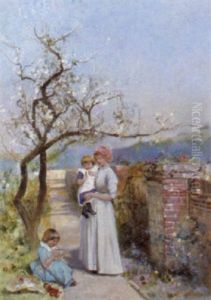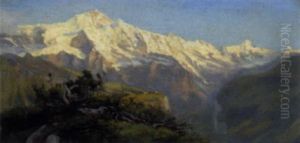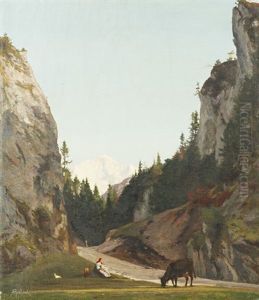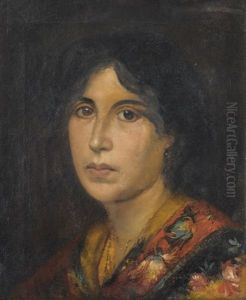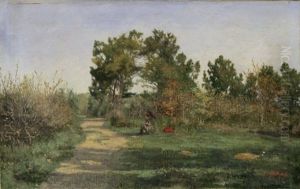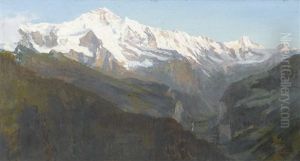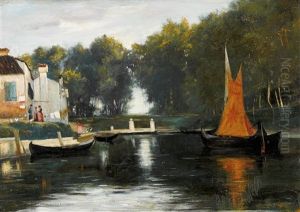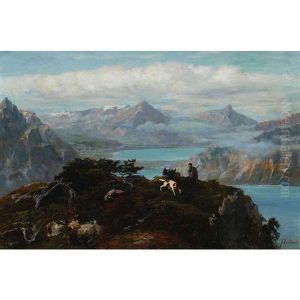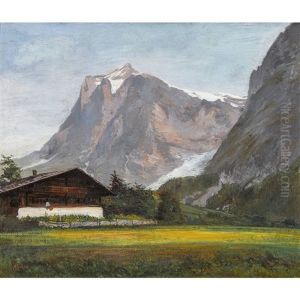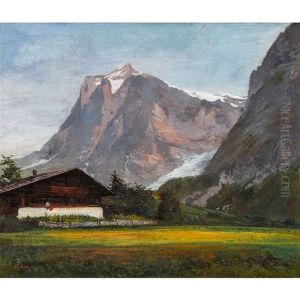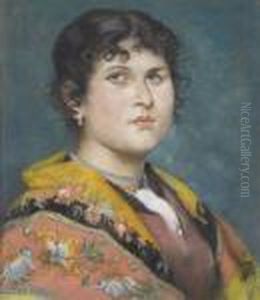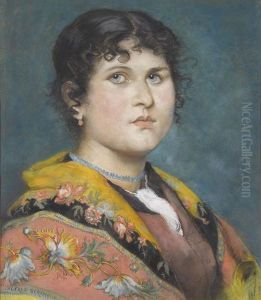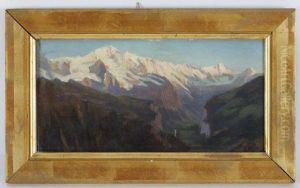Alfred Henri Berthoud Paintings
Alfred Henri Berthoud, born in 1831, was a Swiss artist known for his contributions to landscape painting in the 19th century. Although not as widely recognized as some of his contemporaries, Berthoud's work reflects the precision and beauty of the Swiss landscape, embodying the spirit of the region's natural splendor.
Berthoud's early life was marked by a passion for the arts, which led him to pursue formal training. Initially, he studied at the Ecole des Beaux-Arts in Geneva, where he honed his skills in drawing and painting. His education would have been grounded in the classical traditions of European art, emphasizing techniques that had been developed during the Renaissance and were still highly valued in the mid-19th century.
Throughout his career, Berthoud traveled extensively within Switzerland, capturing the diverse topography of his homeland. From the majestic Alps to the serene lakes, Berthoud's canvases are imbued with a sense of place and the subtle interplay of light and shadow. His style, while grounded in the academic tradition, often incorporated elements of realism and naturalism, which were becoming increasingly popular at the time.
One of the defining aspects of Berthoud's life was his contribution to the cultural life of Switzerland. He was an active member of artistic circles and participated in numerous exhibitions, showcasing his work alongside that of his peers. His paintings were appreciated for their attention to detail and the emotive quality of his depictions of nature.
Berthoud's legacy is preserved through his artworks, which remain in private collections and museums within Switzerland and beyond. Although he may not have achieved international fame, his dedication to capturing the essence of the Swiss environment has left a lasting impression on the art history of the region. Alfred Henri Berthoud passed away in 1914, leaving behind a body of work that continues to be appreciated for its craftsmanship and portrayal of the Swiss landscape.


